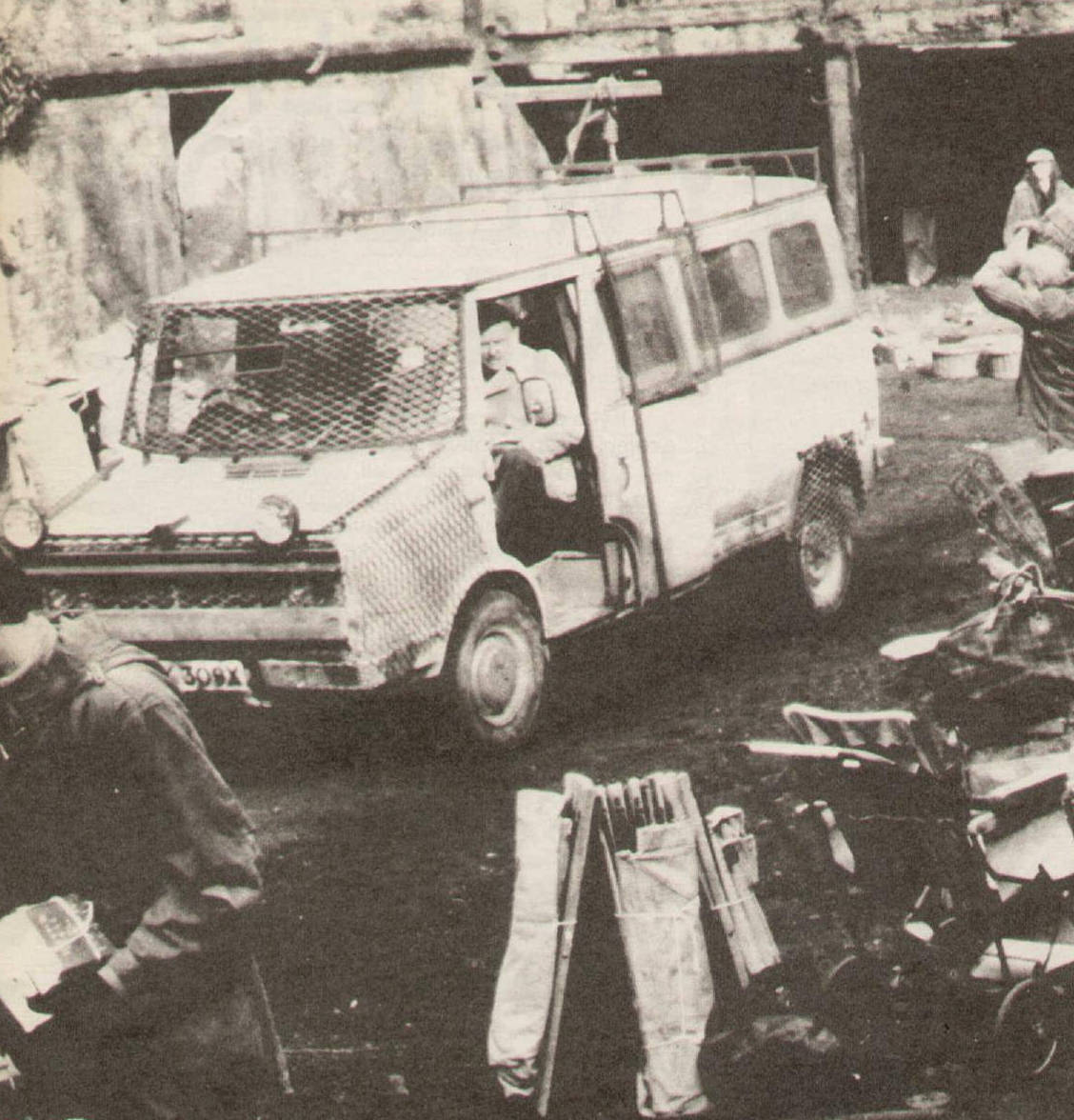on the streets of fear when the world falls apart
Quatermass, the brilliant professor who saved the world from a variety of space-age evils in some of the most original science-fiction adventures on television, is out of retirement. Here, the writer who created the legendary Quatermass sets the scene for the series based in a chillingly possible near future
Quatermass is a story of the future . . . but perhaps only a few years from now. What might be in store for us if our civilization were to come under terrible unforeseen strain?
There are same clues already in the most obvious place: The streets.
Pavements littered with rubbish. Walls painted with angry graffiti. Belfast, black with smoke and rage. Gang fights. Worst of all, the mindless violence.
Even when the streets are quiet, what about the cars in them? How long will they manage to run? They have became the symbol of waste. But when they are scrapped long before their lime, rendered useless by lack of fuel, when trucks stop and rot on the motorways and food supplies are interrupted, when social services are under strain, when public annoyance would turn to alarm. The whole system could crack apart.
The Great Urban Collapse would be on the way. There would be emergency action, of course, – skeleton services, supplies kept going to maintain morale. But as money lost its point, the barter markets would appear, with people exchanging their personal possessions for food. The beaten diseases creeping back. And above all would be fear of gangs battling it out behind the street barricades for loot and territory.
Unbelievable?
That is the London of this new serial. It is where Professor Bernard Quatermass is shocked to find himself. For years he has been living as a recluse in Scotland. He has grown old. Now he has come to the south. He is searching for his grandchild, lost somewhere in this appalling world. When Quatermass sees corpses in suburban streets, the barricades and nailed-up houses, he can sympathies with the despair.
The rest of the world seems in little better shape. But what appalls him is that America and Russia are squandering resources on a useless space project. At least he could protest against that . . .
I think this story belongs to its time, just as the first Quatermass tales did. I wrote those in the 1950s. Even if they involved technology that was then in the future – manned rockets and Moon missions, for example – they were mostly made of recognizable stuff.
It has been pointed out that the Quatermass stories are not science-fiction, but just uses its forms. I agree. I find science-fiction too often mechanistic or facetious. I miss live people. And luckily the limitations of TV in those early days gave us no choice. There was no escaping into elaborate special effects and intricate electronic displays. The first was The Quatermass Experiment in 1953. That was a year of confidence. Mount Everest was climbed and the Queen was crowned. Optimists were looking forward to the possibility of rockets in space – British ones of course. Just to be contrary, I wrote a serial about a space mission that went horrifically wrong. The climax came in Westminster Abbey, where a 100ft.-high monster appeared. Since I had written it, I had to do it. The vast undulating Thing consisted of my hands in rubber gloves garnished with vegetable matter and stuck through holes in a photographic blow-up. It worked. But with the tricks at that simple level, it was faces that told the story. The shoppers and cinema-goers and frightened drunks.
A couple of years later came Quatermass II. There was unease then about secret government establishments like biological warfare stations. So suppose Quatermass came across a vast complex set up to manufacture synthetic food, but not food for any human consumption and already harbouring a form non-Earth life? My favourite scenes came when the innocent workforce realized the truth and tried to smash it up. This time we had a special effects team. But the story was still in the faces.
Quatermass and the Pit belonged to 1959, when the last of London’s blitzed areas was being rebuilt. Sometimes the excavators turned up medieval or Roman remains. But suppose they found what looked like a space ship … ? This time we worked in relative luxury, with a studio full of mud to represent the Pit of the story. Yet again it was the faces – an old woman reading the tea-leaves, a policeman with his many uneasy childhood memories.
Now, 20 years later, we have the new serial. There are inventive, startling settings. But it is the people who count most. Quatermass and his desperate allies, of course, and children, and old women, and muggers …
Faces.

Civilication is breaking down and the rubbish in the streets is just one symbol of the Great Urban Collapse. Can Professor Quatermass bring society to its senses?
References
Kneale, Nigel. “Quatermass: On the Streets of Fear When the World Falls Apart.” TV Times IPC, October 27, 1979.